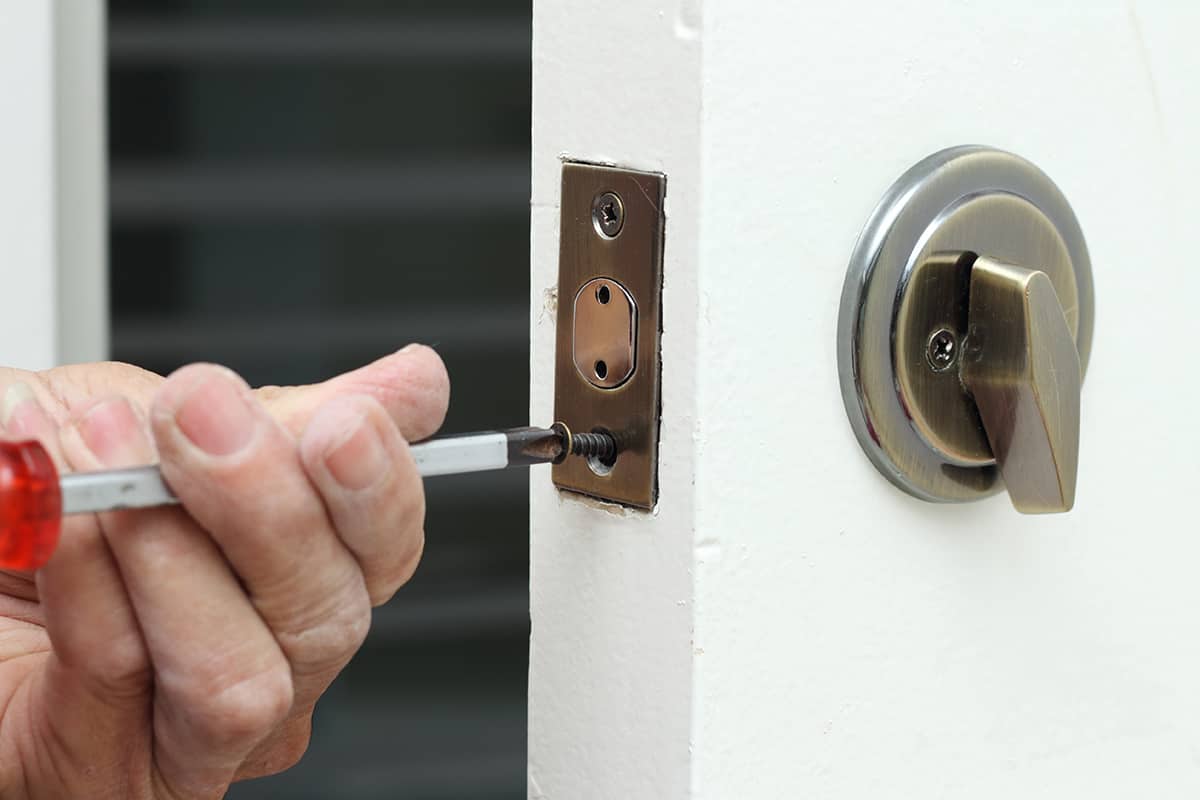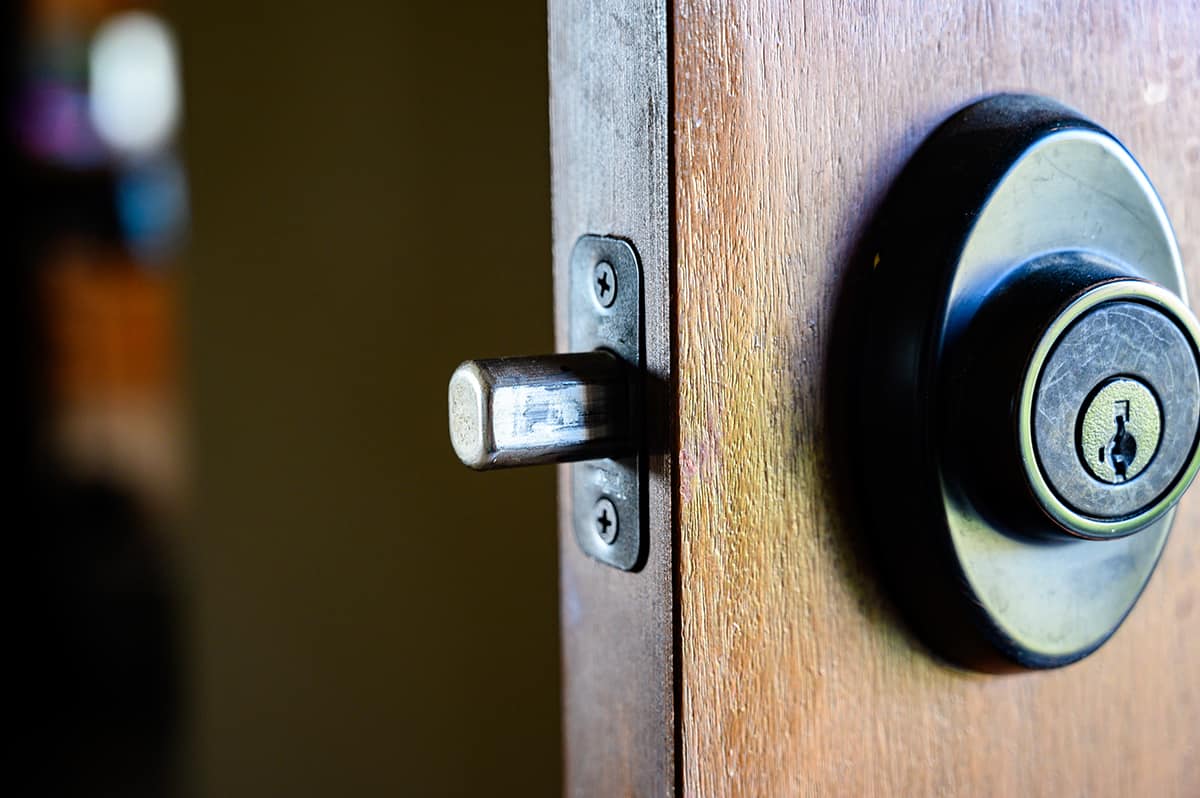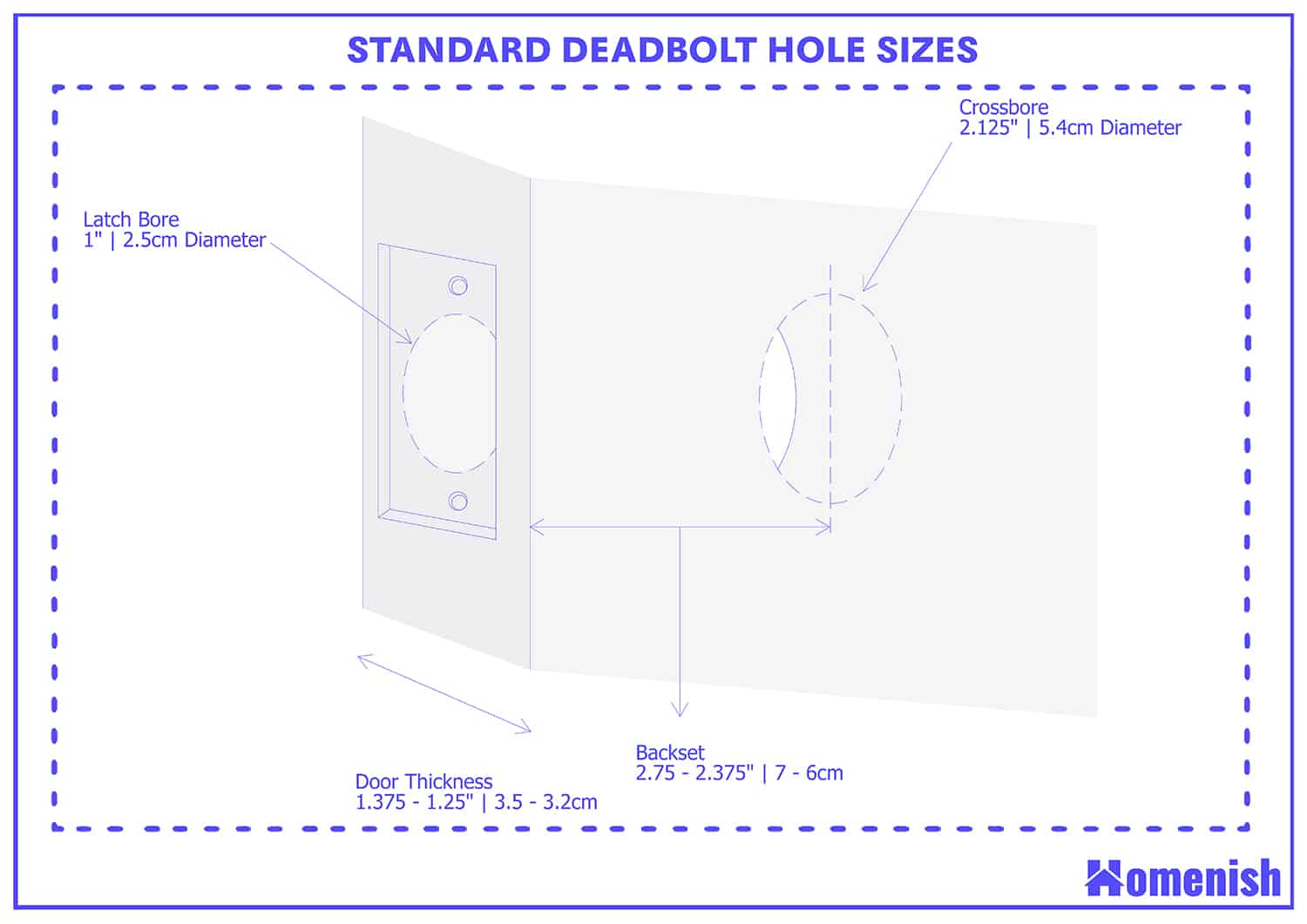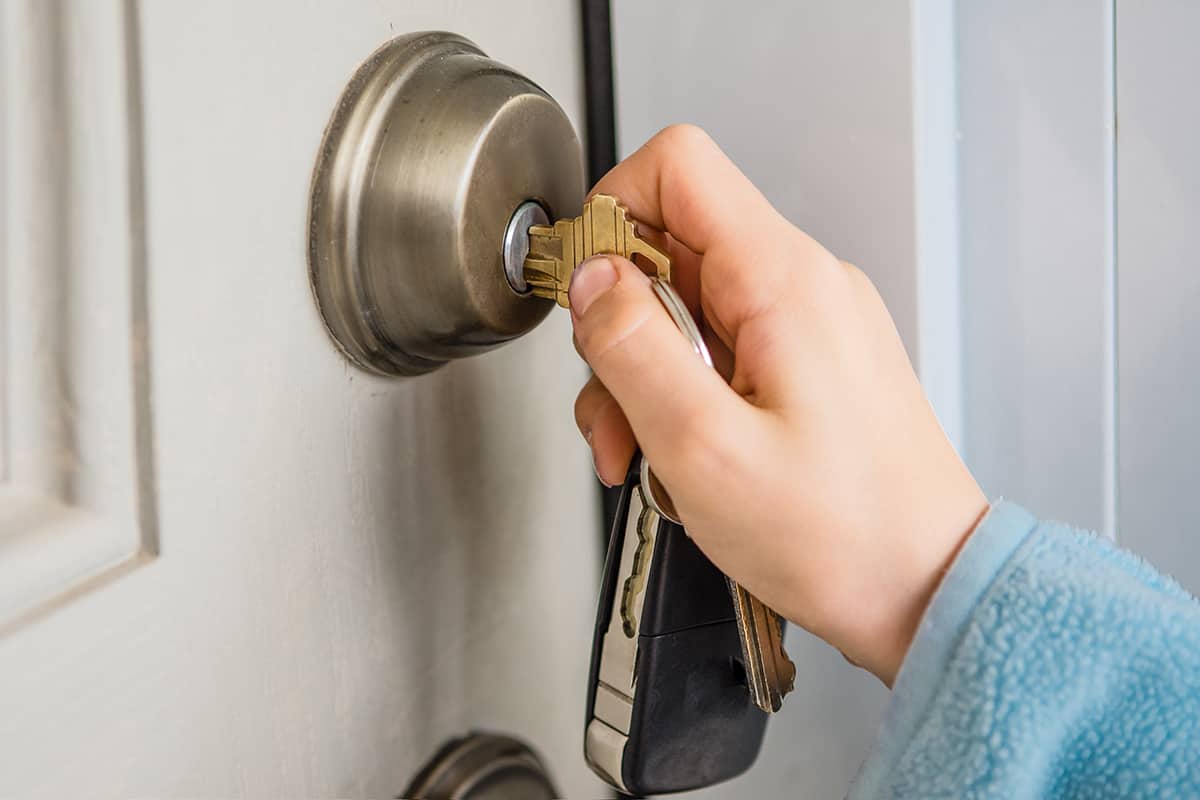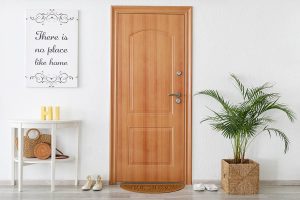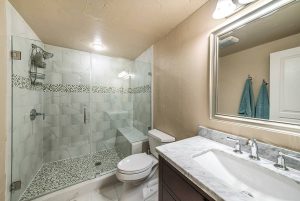Deadbolt locks can be installed easily and add an extra layer of protection against potential intruders. Here we look at the standard size of deadbolts and the corresponding holes needed for installation.
To fit the standard size of a deadbolt lock of 2 ⅛ inches, the cross bore in the door needs to have a 2 ⅛-inch diameter hole while the latch bore needs to have a 1-inch diameter hole.
The standard size for a deadbolt lock is 2 ⅛ inches. This means that a 2 ⅛ inch diameter hole is required for the cross bore in the door, and a 1-inch diameter hole will be needed for the latch bore.
What is a Deadbolt?
A deadbolt is a very secure and strong type of lock which is commonly used as extra protection on exterior doors. They are typically made from a sturdy type of metal such as steel or brass, and they are quite inexpensive compared with other types of locks.
Deadbolts are heavy and difficult to break open, and therefore they provide an additional layer of defense against potential intruders.
These types of locks can be fitted onto any type of door except for steel doors, although they are not recommended for doors that have glass windows.
This is because the glass could be smashed, and then an intruder could reach through to turn the deadbolt lock and unlock the door. Doors without glass windows are always the safer option, even when deadbolts are not in the equation.
Deadbolt Hole Sizes
The standard size for a deadbolt lock is 2 ⅛ inches. This means that a 2 ⅛ inch diameter hole is required for the cross bore in the door, and a 1-inch diameter hole will be needed for the latch bore. Other sizes of deadbolts are available, but the standard size is suitable for most uses.
To find out if a standard size deadbolt will work for your door, ensure that the door thickness is between 1 ⅜ inches and 1 ¼ inches. For doors that are thinner than this, the smallest type of deadbolt widely available is 2 inches. If you have particularly thick doors, you can get deadbolts with a measurement as big as 5 inches.
For standard deadbolts, the faceplate will have a width of at least 1 inch, and the height will be 2 ¼ inches.
The deadbolt will need to be backset from the edge of the door at a distance of between 2 ⅜ inches and 2 ¾ inches, though you should refer to the template and instructions supplied with the specific type of deadbolt you purchased.
The position of the deadbolt on your door will be the same, irrelevant of the size of your door or the type of deadbolt you have chosen.
It is recommended that a deadbolt always be around 6 inches above the existing handle or knob on a door, or alternatively, you can measure between 40 and 45 inches from the level of the floor to decide on the positioning of the deadbolt.
How Does a Deadbolt Work?
A deadbolt is operated by turning a key or a thumb turn mechanism, which causes the bolt inside the door to extend or retract. When the door is closed, and you turn the key to extend the bolt, it will lock into place in the corresponding door frame, thereby securing the property.
A deadbolt does not use a spring mechanism like many other types of locks, and this is what makes this type of lock difficult to manipulate. The lack of spring in a deadbolt means that it will be much harder to force the lock open with a crowbar or wrecking bar.
Types of Deadbolts
Turn deadbolt
A turn deadbolt is the most simplistic type of deadbolt lock available. On the outside of a property, the deadbolt will be operated with a key, while on the inside of the property, you can lock or unlock the door with a thumb turn mechanism. It is the most common and most affordable type of deadbolt.
The fact that you don’t need a key to unlock the deadbolt from the inside of the home has advantages and disadvantages. A turn deadbolt is great if you need to get out of the house in a hurry, for example, in the event of a fire, because you won’t need to waste time trying to find the key, which could prevent you from getting out of the property in time. It is also handy when answering the door to visitors because you can still unlock the door without the key to hand.
However, a turn deadbolt is a bad idea if you have any glass windows on your door because an intruder could break the glass and then reach through to turn the deadbolt and unlock the door.
Double cylinder deadbolt
A double cylinder deadbolt is operated by a key from both sides to lock and unlock the door. This provides an extra layer of protection against potential intruders, especially if you have glass panels on your door.
An intruder could smash through the glass and reach through to the indoor deadbolt, but they would only be able to unlock the door if you had left the key inside the lock. For this reason, it is recommended that the door key is always kept out of reach of the front door.
However, from a fire safety perspective, requiring a key to let yourself out of the house could present a problem. If you can’t get to the key in the event of a fire, then you would be trapped in the house, or if a child is trying to exit the house in a fire, they might not know where the key is or how to use it, whereas a thumb turn is much easier and more obvious to operate.
5 lever deadbolt
A 5 lever deadbolt is the strongest type of deadbolt. When you turn the key to lock the door, 5 different levers will extend into the door frame for ultimate security. Each lever is positioned at a different point in the door, so there are no weak spots.
Like the double cylinder deadbolt, this lock also requires a key to operate it from both sides, so you will need to always keep a key in an easy-to-access place that the whole family knows about in case a fire should occur.
